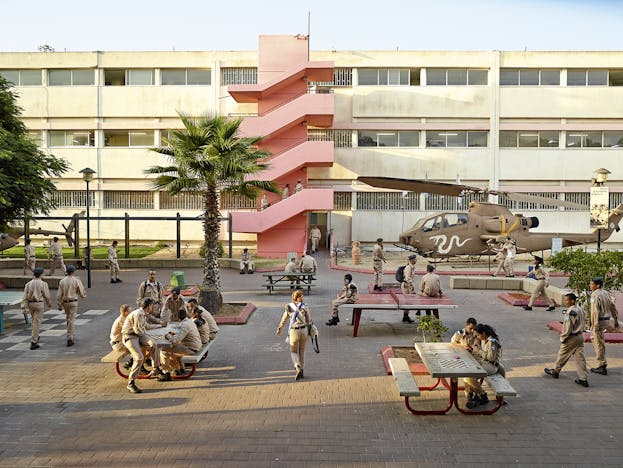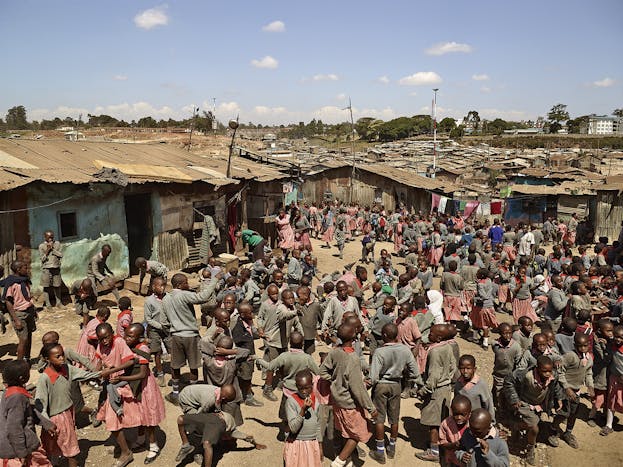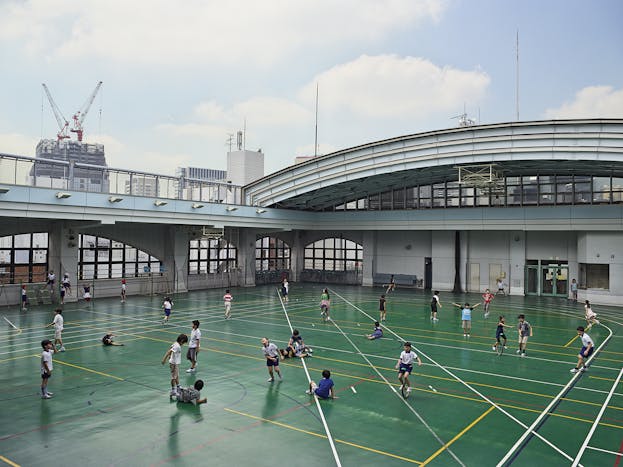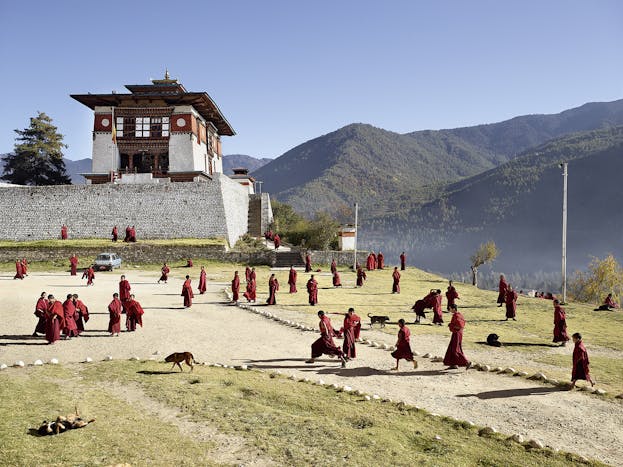James Mollison has a knack for simultaneously pointing out the little similarities and great differences between cultures in a single, simple photograph. In his series "Disciples," he presents the breadth of music fanatics, from hard-rockers to hip-hoppers. In "Where Children Sleep," Mollison contrasts children and their bedrooms from around the world. In his most recent series, "Playground," Mollison explores childhood and the narrative of play. The series, which will be published in a book this month and exhibited in New York City from April 16 to June 11, consists of composite images, or individual scenes layered on top of one another to create a single image.
Below, Mollison discusses creating "Playground," the idea of childhood, and photography.

James Mollison: One day I was thinking back about my time in school, and I was aware that nearly all my memories were ones that had happened on the playground. I remembered it as this place of fun, but of arguing and fighting, and joy and tears. I had some quite strong emotions there. So I was thinking that would be an interesting place to kind of explore photographically.
A lot of what I was looking for was thinking back to when I'd been in the playground: There were the rough-and-tumble games that we used to play as boys. We used to play this game called kick-square, where you'd all line up on one side and then run down the middle of it, and all the boys tried to kick you in the middle.
So I was looking out for little stories, I suppose, that happened in the playground. And the comping [creating a composite image] became a way of being able to take little moments that had happened over one morning break, or one lunch break, and put them together at the same time. I haven't moved them around, the people: What's happened has happened in that spot. It's just that it might have happened at different times. I wanted to create photos that were engaging, that people could look into and find little things.

JM: I think [photo editing] is only problematic if you try to hide it and not be honest about it. I find it a little bit like this debate about truth in photography. I suppose I'm somebody who doesn't look at photographs and think that they're real. I don't believe them as truths.
I first became aware of [composite photographs] when somebody I was interested in—I was looking at an Andreas Gursky print—and I was thinking, 'How did he get those chickens, like, in the exactly the right place? Did he wait for so long?' Then I went back and read up on him. This was his earlier stuff. His older stuff is more obvious with the manipulation. To sit in front of one of his pictures is really a sublime experience. It's completely different to sitting in front of a photojournalistic picture.
I studied documentary, so I think all of my ideas are inspired by the little observations I make about the real world. But I'm more interested in using the language of photography to create, to tell that story.

JM: The "Playground" project I originally started just in Britain, because I was interested in the diverse experience that kids have. I thought that that would be interesting, to look just in one country, because you've got from your inner-city state schools, to your posher private schools, to a school for an autistic kid, to a mainly Muslim school. This seemed like quite a lot of material.
But as I was making it, I had an assignment in Kenya. I was born in Kenya, so I was intrigued to know what the schools were like, so I stayed on a bit. It was at the same time as "Where Children Sleep" was out, and that was a lot more successful than I ever thought it was going to be. Although it was about 15 countries, they were dotted around to give it a global feeling, and I think that made the project stronger. So that's when with "Playground" I decided to do more countries and make it also feel more global.

JM: I would see this incredible difference in situations with the school. That could be within one country, or comparing. But what was quite remarkable to me was the way that children played in the same way no matter where they were. Particularly boys, between the ages of six, seven, nine—the primary school boys. It didn't matter whether I was in a slum in Kenya, or a posh school in England, or an inner-city school in England, or a school in Bhutan. There were some playgrounds that I photographed where there would be no teacher supervision, so it might be a little bit rougher there. But the play was very, very similar. And the same with girls; the clapping games I saw in lots of countries.
The two that stand out slightly were Japan—the children were the best behaved that I saw anywhere—and China, where the schools that I photographed in, in cities, they don't actually have breaks. They have breaks, but they're exercise breaks. So they're these huge, almost like an aerobic stretching lesson that they all do together with the microphones echoing across the school. But even then I could notice—getting ready for those, or just after them—you would see similar play. But because their breaks were more structured you didn't see it quite as much.

JM: Definitely the most challenging part was getting access into the schools, because there's an incredible paranoia about photographing children. It's much easier for a headmaster, or headmistress, or principal, to say no. I worked with Amber, my wife, and we had a kind of carpet bomb approach, where we would literally write to like, 50 schools in an area we were going to, and we might get one or two responses.
They're these places that are everywhere, dotted around towns, in every city. But then they're completely closed to outsiders. Certainly when I was in London, I'd be up on a ladder and I'd have young kids wobbling my tripod and calling me a pedo, calling me a pedophile. There's this kind of idea that if you’re photographing kids it's somehow dubious and dodgy, which is quite a tragic kind of reflection on society.
This interview has been condensed and lightly edited for length and clarity.
